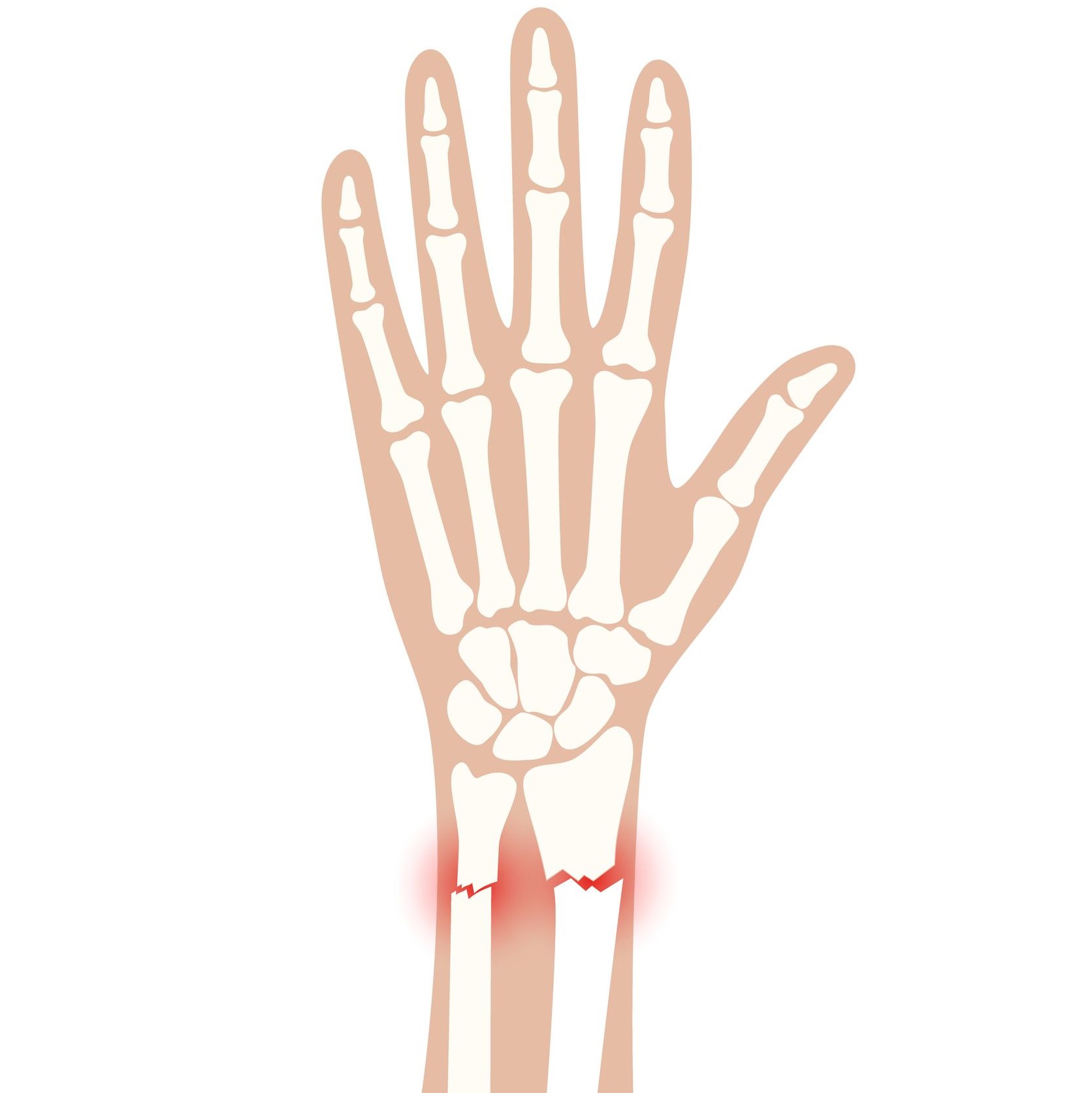The word fracture means break, but the term ‘broken bone’ is a colloquialism, as break is not a formal orthopaedic term. A bone may be completely fractured or partially fractured.
A bone fracture (sometimes abbreviated #) is a medical condition in which there is a break in the continuity of the bone.
A bone fracture can be the result of high force impact such as in a traumatic accident, stress from overuse in sport, or from trivial injury as result of certain medical conditions that weaken the bones, such as osteoporosis or bone cancer. These kinds of injuries can then be properly termed pathologic fractures. Fractures are classified in simple terms as open/compound where the bone penetrates the skin, or closed/simple where the skin stays intact, and they can divided into the following categories:
| Compression Fracture | As the name suggests, a compression fracture occurs when the bone is compressed and breaks under the stress. This is most common in the vertebrae of patients suffering from osteoporosis, where the bones in the vertebrae are weak. |
| Comminuted Fracture | This type of fracture, which splinters and contains small bone particles, is when the bone shatters into more than two pieces. This fracture is usually caused by severe force, such as a car accident. |
| Transverse Fracture | The transverse fracture is at right angles to the long axis of the bone. It is normally caused by a direct, sharp blow to the bone or it may be as a result of stress on the bone during sport. |
| Spiral Fracture | A spiral fracture refers to a fracture caused by a twisting force that creates an oblique fracture around and through the bone. The most common cause for these types of fracture is sporting injuries. |
| Greenstick Fracture | A greenstick fracture is an incomplete fracture, that doesn’t go all the way through the bone. It usually occurs in children, whose soft bones splinter without breaking in two. Sudden force causes only the outer side of the bone to break. |
| Oblique Fracture | The oblique fracture is broken at an angle across the bone and is usually the result of a sharp angled blow to the bone. |
Classification of fractures can get even more detailed on an anatomical level, which means the fracture is not only defined by type but also by its location in the body.

